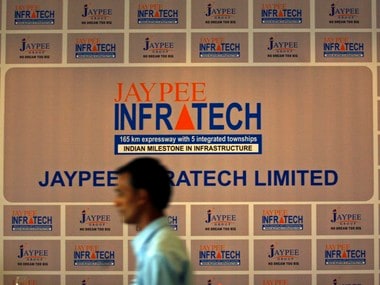There is a sense of déjà vu amongst the cognoscenti. More than two decades ago, the Supreme Court had invoked Article 142 of the Constitution to do complete justice to those who had booked commercial flats in Delhi’s prestigious Videocon Towers by paying hefty amounts. The builder was Skipper Constructions Ltd, which after siphoning off funds through a labyrinthine subsidiary route of multi-layering of funds, pleaded inability to proceed with the project and, to also return the booking amount. The Supreme Court swung into action. It constituted itself almost as a receiver and went into the money trail with meticulous detail often lifting the corporate veils and ultimately retrieved the loot for the buyers. The judgment was hailed as avant-garde and trail-blazing. Fast forward to 9 August 2018. The Supreme Court (SC) passed its order on this day in the public interest litigation (PIL) filed in August 2017 by one of the numerous buyers in various projects of Jaypee Infratech Ltd, Chitra Sharma, when the builder similarly played truant. The SC order of 9 August 2018 with due respect to it, has left the homebuyers in the wonderland of Trishanku— hanging between secured and unsecured creditors! One expected the apex court to gird its loins in the same manner as it did in the Skipper Construction case, all the more because the buyers involved in the Jaypee case were humble and less well-heeled homebuyers and not buyers of commercial property as was the case with Skipper Construction. The long and short of the SC order in the Jaypee case is the matter has been remanded back to the National Company Law Tribunal (NCLT) Allahabad Bench from which the matter was taken over by the SC in August 2017. This was done following a public interest litigation (PIL) whose gravamen was the high and mighty secured creditors led by the IDBI bank would polish off whatever funds were made available through the insolvency proceedings under the newly minted Insolvency and Bankruptcy Code (IBC) 2016. This would leave unsecured homebuyers holding the can. Sadly for the homebuyers that supreme concern remains unaddressed despite the PIL. [caption id=“attachment_4294419” align=“alignleft” width=“380”]  Representational image. Reuters[/caption] The Parliament had recently amended the IBC to make homebuyers a stakeholder in the insolvency proceedings but only to the extent of participation in the committee of creditors by being elevated to the ranks of financial creditors. To be sure, it does elevate them a wee bit both in the pecking order of payment and also in the participation in the process of the sale of the controlling interest in the defaulting home building company. But, this is cold comfort for harried homebuyers because as it happens when the funds are inadequate, the secured creditors together with the preferential creditors like workmen walk away with everything that can be mustered leaving very little, if at all, for the homebuyers. The Jayepee Infratech balance sheet as on 31 March 2018 shows secured loans of Rs 7,006 crore as opposed to current liabilities of Rs 8,198 crore which includes the advance paid by homebuyers. Against this background, one can easily visualise what is in store for the harried and hapless homebuyers given the additional fact that the net worth of the company stands at Rs 3,312 crore – the bulk of which is expected to evaporate when bidding starts by hardnosed businessmen. Being treated as ‘secured’ or ‘unsecured’ is important in the “waterfall” mechanism which sets out the order of priority in which proceeds from the sale of liquidation assets are to be distributed under the IBC. In other words, it is not the elevation to the ranks of financial creditor but to the ranks of secured creditors that would have given relief to the hapless homebuyers. Indeed they deserve this heightened status given the fact that practically the builders raise funds from the homebuyers promising to use the funds for building houses for them. But the law goes by documentation. Homebuyers would find it difficult before the NCLT proving their case as secured creditors in the absence of documents saying so in so many words. The SC using its vast powers under article 142 of the constitution could have deemed the homebuyers as secured creditors even if technically and legally they did not make the grade. Instead, what it has done is to merely extend the time for redressal by the NCLT by deeming the insolvency proceedings to have started from 9 August 2018 so that the case is not time-barred by the normal 180 days limit that started in August 2017. One wishes the SC had done something more substantial for the homebuyer. Instead, it has latched onto the recent amendment elevating homebuyers to the ranks of financial creditors which in turn apparently was triggered by the PIL before the SC. But who wants an abode in Trishanku land? The homebuyers of Jaypee would have to stand in a queue after secured creditors and preferential payments to workmen, etc., are made, but before the operations creditors like cement suppliers, etc., under the IBC’s waterfall mechanism. Much the same has been said by Shardul Shroff of Amarchand Mangaldas a law firm— by becoming a financial creditor, a homebuyer would have priority over Government and operational creditors. Under the waterfall mechanism, he (homebuyer) would be in the category of the financial creditor which would be above the category of operational creditor and the Government. (The writer is a senior columnist and tweets @smurlidharan)
It is not the elevation to the ranks of financial creditor but to the ranks of secured creditors that would have given relief to the hapless homebuyers in the Jaypee Infratech case
Advertisement
End of Article


)

)
)
)
)
)
)
)
)



